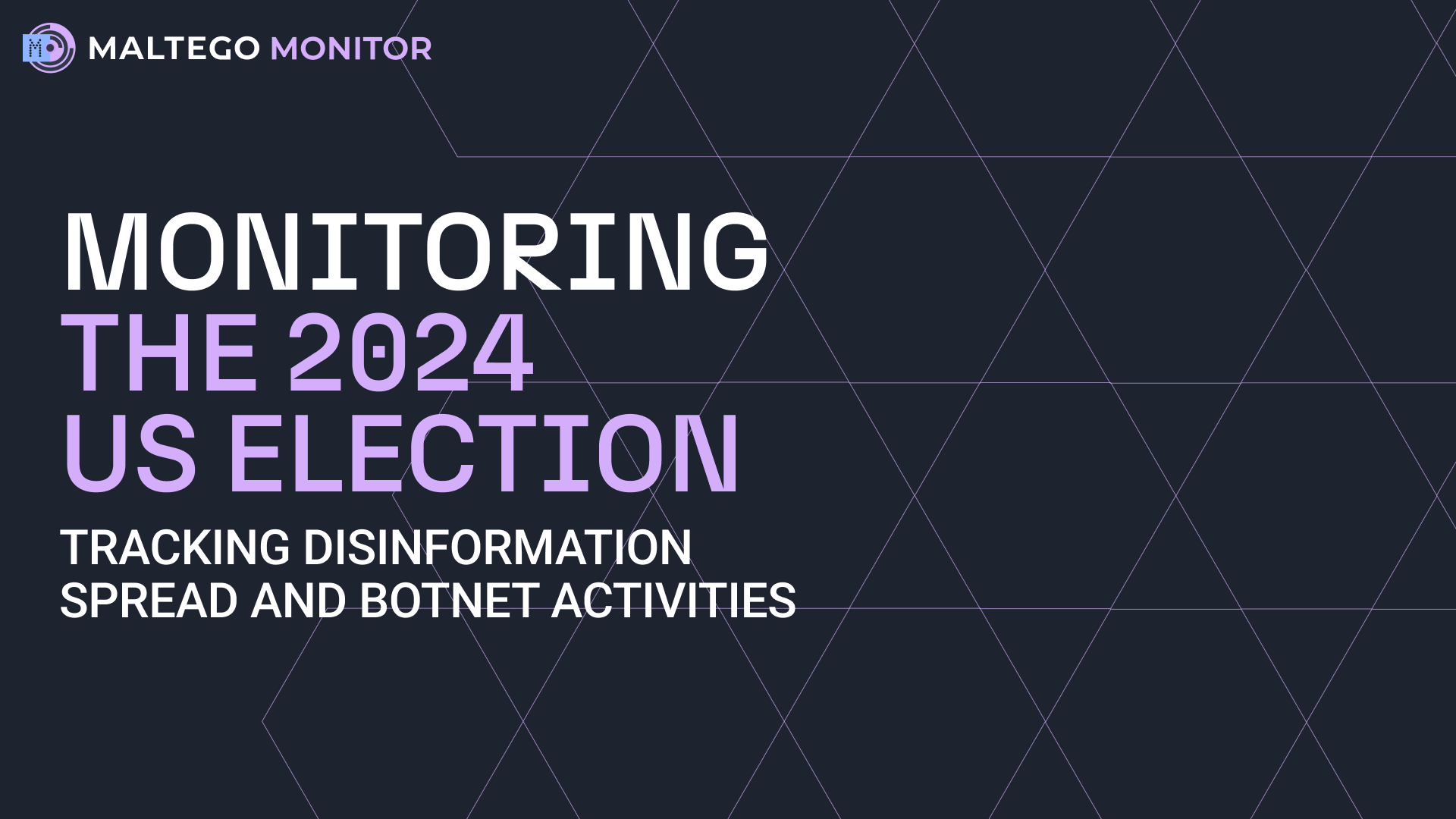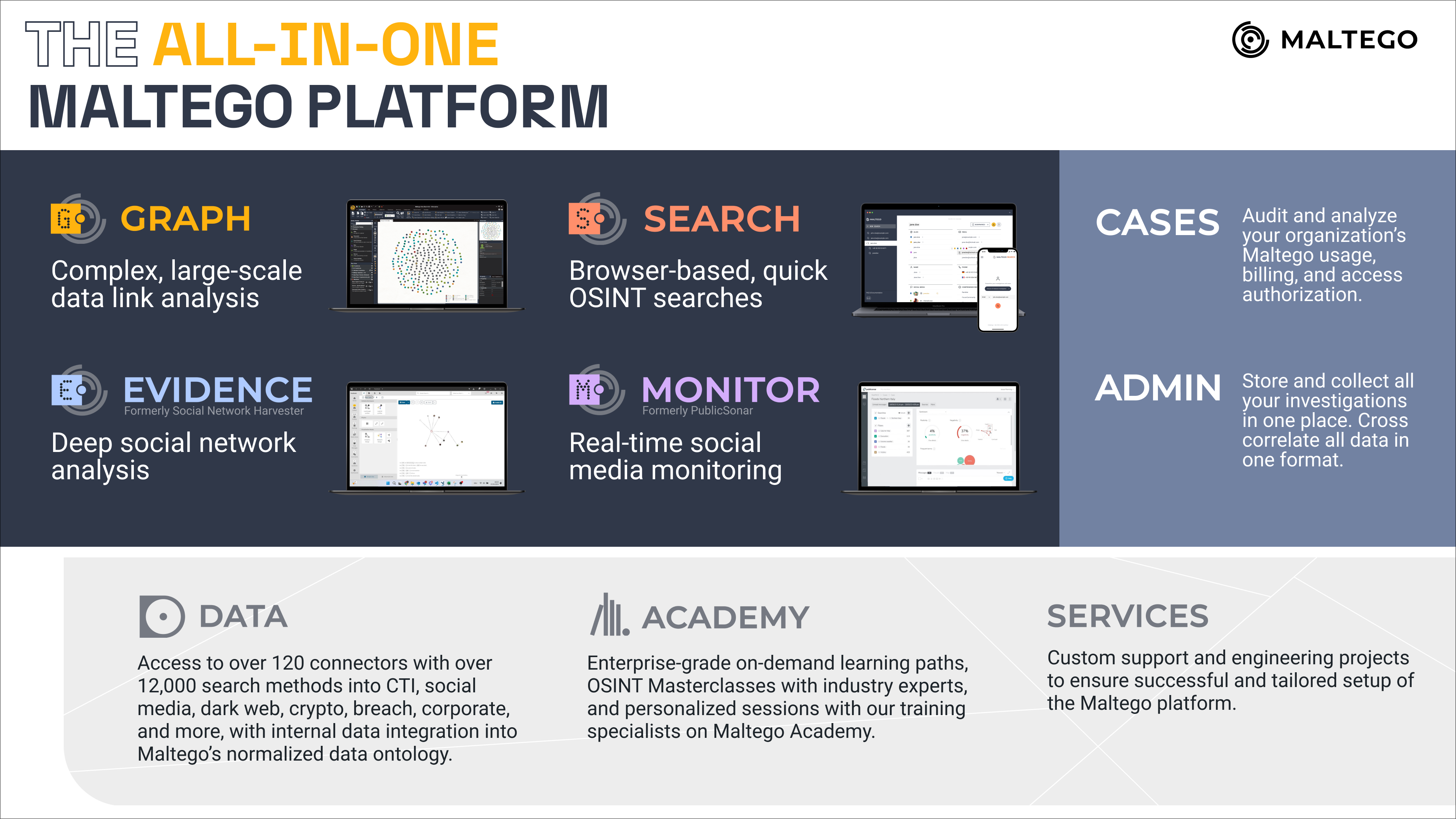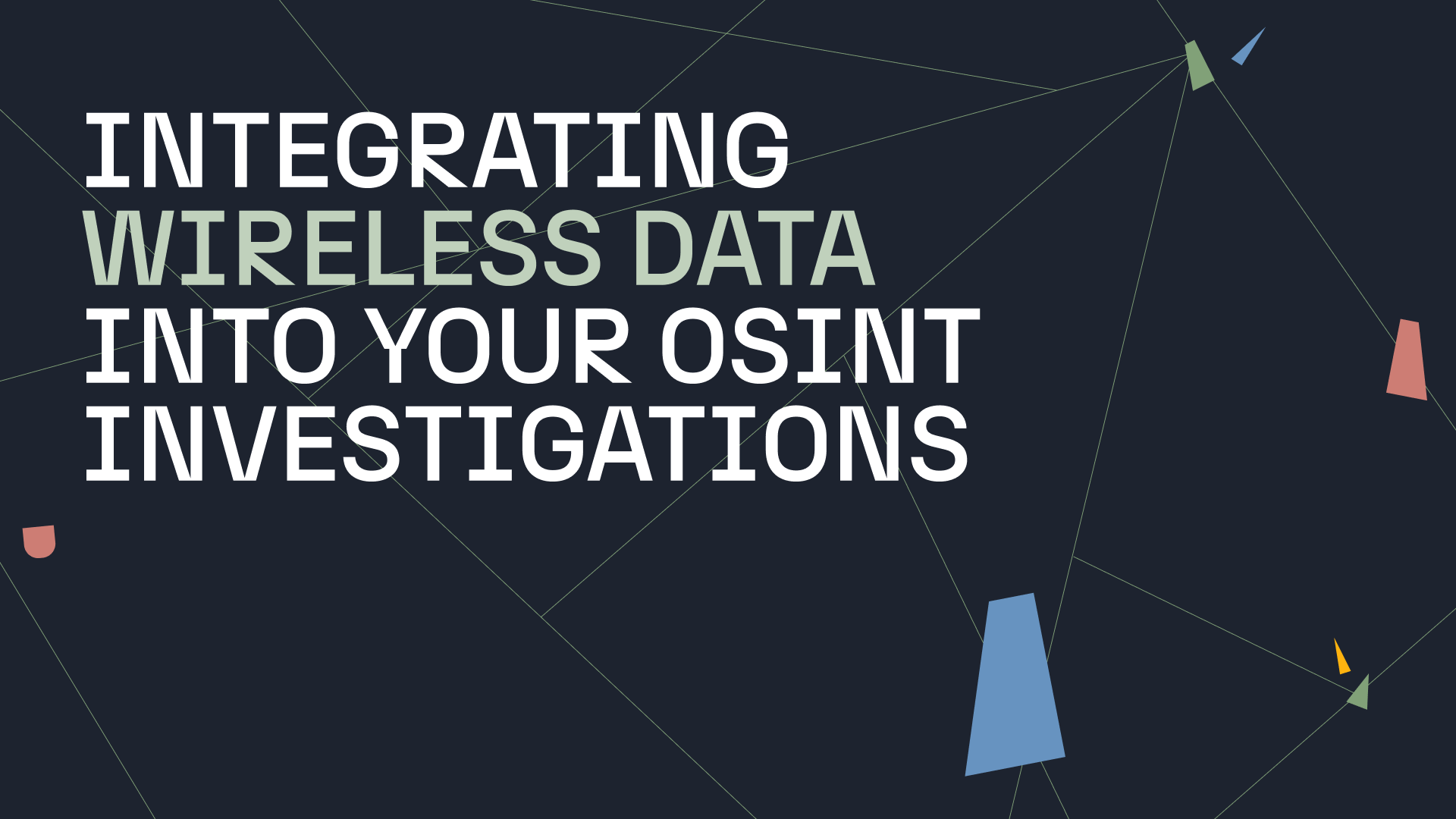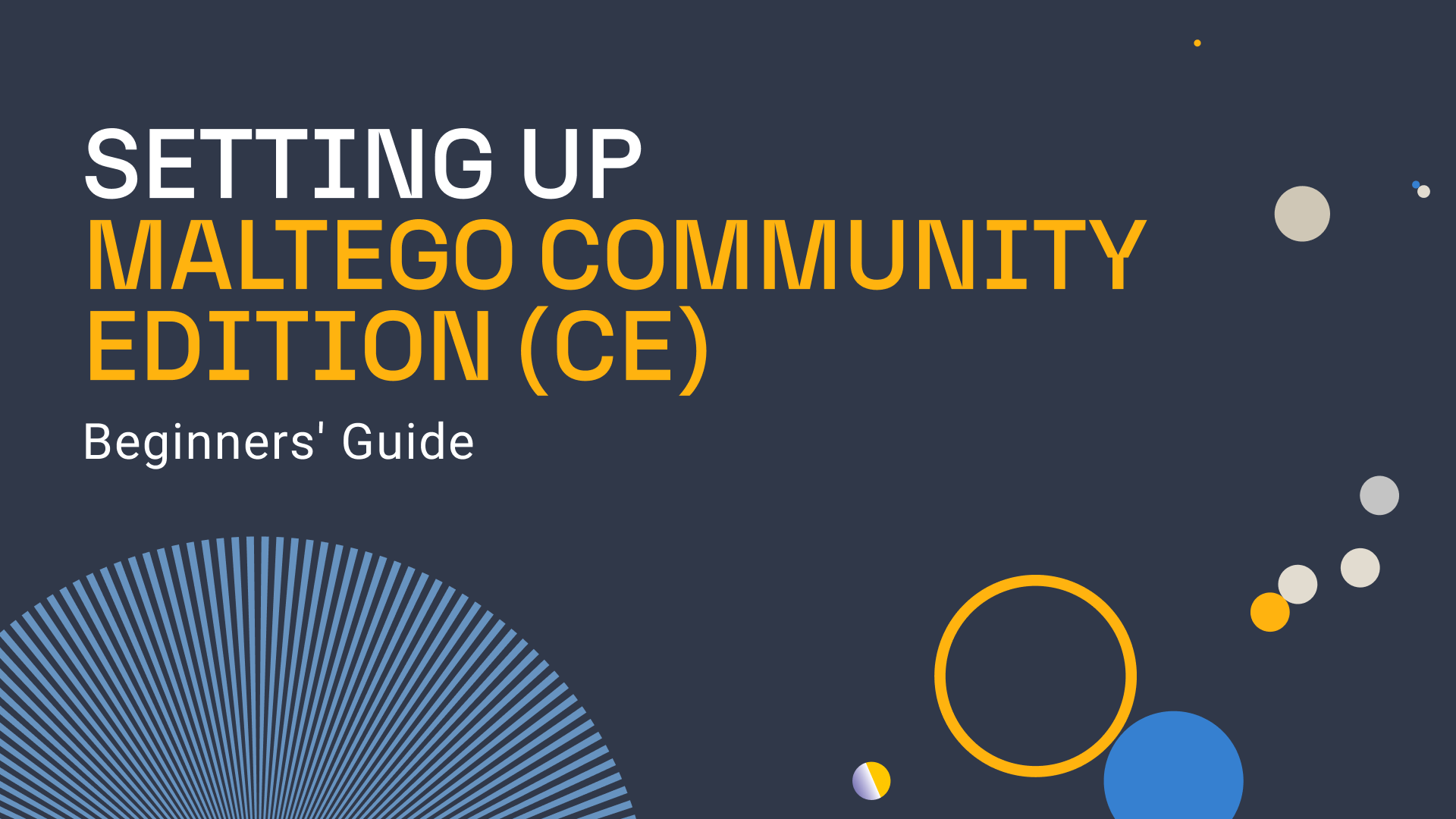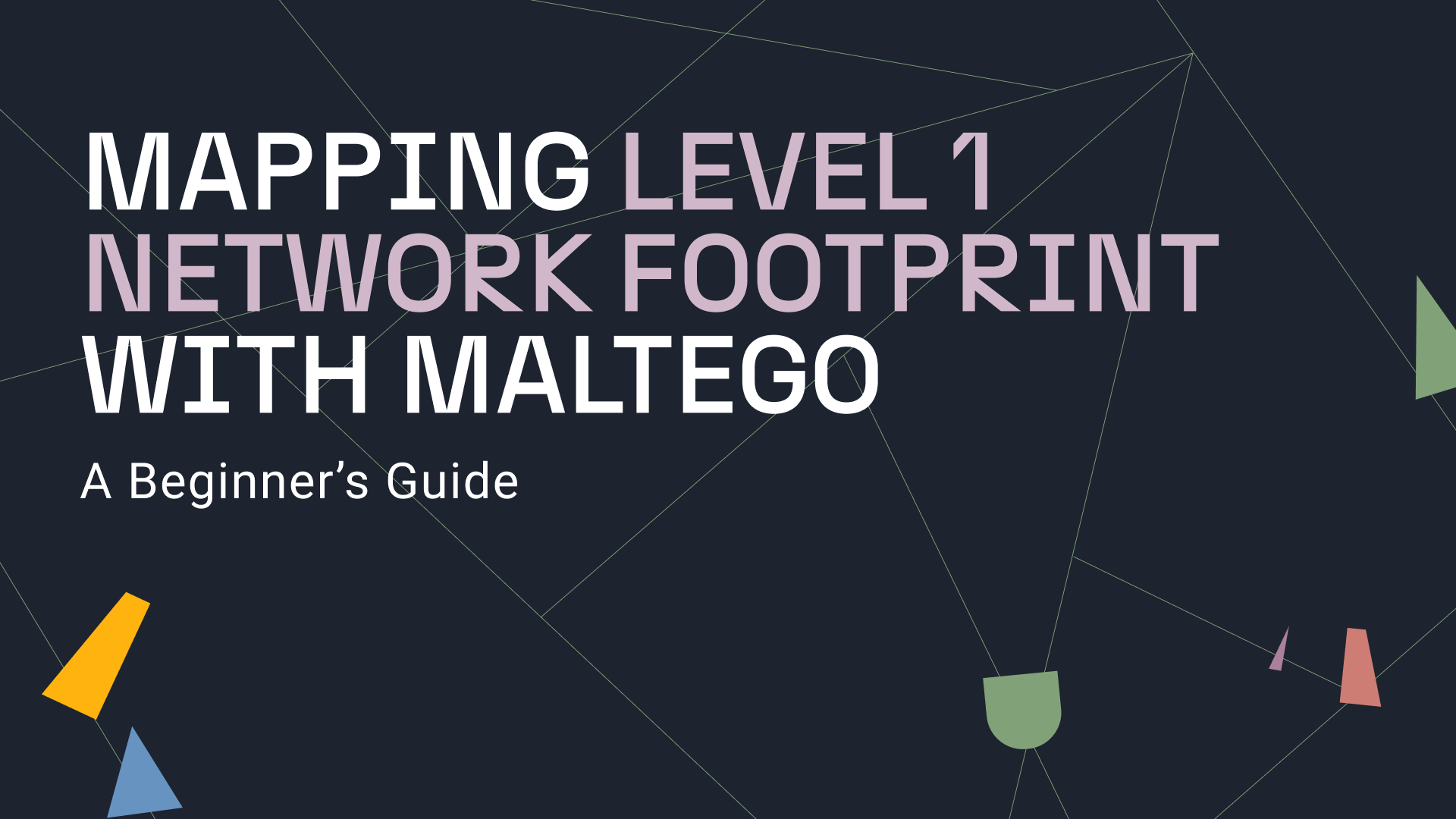As the 2024 US election unfolds, the challenge of safeguarding democratic integrity is more pressing than ever. Disinformation campaigns, AI-generated content, and bot-driven networks are intensifying, posing serious risks to the credibility of election outcomes and public trust.
These can also sway public opinion, shaping narratives and influencing voter sentiment in unprecedented ways. Yet, identifying and counteracting these disinformation campaigns remains challenging. In this blog, we’ll discover how Maltego Monitor empowers you to detect these campaigns, trace false narratives, and ultimately help protect the integrity of democratic processes. Plus, stay tuned for an exclusive real-life demo, giving you a firsthand look at how these investigations unfold in action!
What is Maltego Monitor? 🔗︎
Maltego Monitor is an intelligence and monitoring tool within the Maltego platform. It is included in the Organization plan with other tools like Maltego Graph, Maltego Search, and Maltego Evidence. Designed for monitoring high-stakes situations, it empowers public safety and national security teams with real-time intelligence and AI-driven sentiment analysis for precise social media investigations.
With Maltego Monitor, teams can:
- Identify and mitigate emerging risks: Track disinformation, AI-generated content, and bot-driven narratives before they impact public sentiment or escalate during critical events like elections.
- Analyze vast datasets in real-time: Tap into social media, news, subreddits, and other platforms to spot potential threats and disinformation campaigns.
- Deploy intuitive, cross-platform monitoring: Adaptable for both novice and seasoned investigators, it efficiently handles open-source data across high-risk locations to pinpoint disruptions during large-scale events, elections, or crises.
Maltego Monitor’s capabilities enable agencies to make swift, informed decisions and build actionable plans, protecting democratic processes and minimizing impacts on election integrity. Let’s find out how Maltego Monitor can be used for monitoring the 2024 US election. Continue reading!
Tracking Disinformation Spread and Botnet Activities with Maltego Monitor 🔗︎
Disinformation campaigns and botnet activities can undermine public opinion and disrupt democratic processes. With Maltego Monitor, you can track the origins and spread of disinformation, identify coordinated botnet activities, and uncover the network of sources fueling harmful narratives.
Ready to see Maltego Monitor in action? Watch the full demo now!
DISCLAIMER The examples in this video are provided solely for educational purposes and do not imply or suggest support, endorsement, or alignment with any political party, policy stance, religious belief, or ideology. The keywords and views expressed are intended to illustrate the spread of disinformation and are not reflective of any specific affiliations or endorsements.
Discover More Powerful Use Cases in eBook 🔗︎
Maltego Monitor is an essential resource for commercial sectors, law enforcement agencies, and governments, enabling them to counter disinformation, safeguard corporate reputation, track illicit activities, and respond to diverse threats. It empowers teams to respond proactively to crises, allowing them to act swiftly and decisively in the face of emerging risks tied to elections and beyond.
See how Maltego Monitor meets your investigative needs! With unpredictable threats emerging online and escalating fast, comprehensive situational awareness is key. Get the insights you need with our latest e-book. Download now or request a demo to see how Maltego integrates seamlessly into your workflows—tailored to your cases!
Download the resource
Stay connected with us on X and LinkedIn, and subscribe to our email newsletter to stay updated with the latest news and developments.
Happy investigating!
About the Author 🔗︎
Mitch Chaiet
Mitch Chaiet, founder of Experiential Technologies, is a disinformation researcher and investigator dedicated to providing tools, intelligence, and content to track information across the internet. His team at Experiential Technologies, a technology prototyping partner for creatives, supports the OSINT industry with services and tools for image, video, audio, AI, and social media analysis. Reach out for social media OSINT services with Maltego Monitor.



